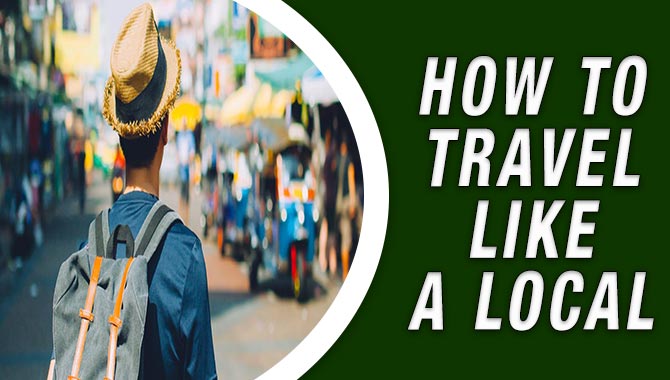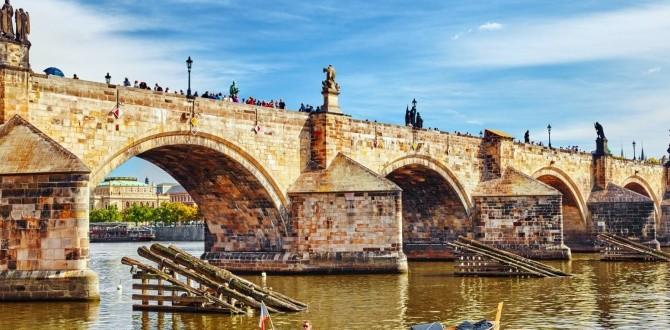Bhutan Public Transport Cheat Sheet: Essential Guide
Planning a trip to Bhutan? Navigating its unique public transport system can seem daunting, but with this cheat sheet, you’ll be moving around the Land of the Thunder Dragon like a local in no time. This guide breaks down your options, costs, and tips for a smooth, affordable journey.
Welcome to the enchanting Kingdom of Bhutan! Planning your adventure here is exciting, and figuring out how to get around is a key part of that. Bhutan has a special approach to tourism, and their public transportation systems reflect this. It’s not always as straightforward as in other countries, which might leave you wondering about the best ways to travel between its stunning valleys and towns. Don’t worry, though! We’re here to simplify it all for you. We’ll cover everything you need to know, from buses to taxis and even some local quirks. Get ready to explore Bhutan comfortably and affordably.
Understanding Bhutan’s Public Transport Landscape
Bhutan’s public transport is designed with its unique geography and tourism policy in mind. Unlike many countries where extensive public networks are the norm, Bhutan offers a more controlled and often personalized travel experience, especially for tourists. This means public transport options are present, but they might differ from what you’re used to.
The Role of Your Tour Operator
For most tourists visiting Bhutan, the most common and often mandatory mode of transport will be arranged through your licensed Bhutanese tour operator. This typically includes a private vehicle with a driver and a guide. While not strictly “public transport” in the conventional sense, it’s the standard way to experience Bhutan.
Inclusions: Your package usually covers all inter-city travel, airport transfers, and excursions within your itinerary.
Convenience: This method offers unparalleled convenience, door-to-door service, and the flexibility to stop at scenic spots.
Cost: The daily Sustainable Development Fee (SDF) and tour package price account for these services.
When Public Transport Becomes an Option
If you are a traveler who prefers independent exploration or are on a more specialized visa (like for business or specific research), or simply curious about local travel, there are public transport options available, though they require more planning and a degree of flexibility. These are primarily utilized by locals but can be accessed by visitors.
Navigating Bhutan by Bus
The bus network in Bhutan is the most accessible form of public transport for longer distances and is primarily used by locals. It connects major towns and cities.
Inter-District Buses
These buses are the lifeline for many Bhutanese people. They operate between district capitals and major towns.
Routes: The most common routes connect Thimphu (the capital) with Paro, Punakha, Wangdue Phodrang, Phobjikha, and Gaylegphug. There are also services to border towns like Phuentsholing.
Frequency: Buses usually run once or twice a day on most routes. They depart early in the morning.
Comfort: Seating can be basic, and journeys can be long due to winding mountain roads. Pack snacks and water!
Tickets: Tickets can usually be purchased at the local bus station shortly before departure or sometimes the day before. International credit cards are not widely accepted for these small cash transactions.
Language: Announcements might be in Dzongkha, the national language, so paying attention to the destination board or asking fellow passengers is a good idea.
Key Bus Routes and Estimated Travel Times
| Route | Distance (approx.) | Estimated Travel Time (approx.) | Notes |
| :————————– | :—————– | :—————————— | :—————————————— |
| Thimphu to Paro | 50 km | 1.5 – 2 hours | Connects the capital to the international airport town. |
| Thimphu to Punakha | 75 km | 2.5 – 3 hours | Goes over the Dochula Pass. |
| Thimphu to Wangdue Phodrang | 90 km | 3 – 3.5 hours | Further east from Punakha. |
| Thimphu to Phuentsholing | 170 km | 5 – 6 hours | Major border town for entry/exit from India. |
| Paro to Phuentsholing | 120 km | 4 – 5 hours | Another option for border access. |
Bhutan Post Buses
Sometimes, Bhutan Post also operates bus services, often on similar routes. These are reliable and used by locals.
Hiring a Bus Seat
For popular routes, you can sometimes “hire” a seat on a bus. This is a more informal arrangement where a group of individuals might collectively hire a vehicle for a specific journey, or you might find a driver willing to take passengers if the regular bus is full or not running. This is more common for longer or less frequented routes.
Taxis: A More Comfortable, Though Pricier, Option
Taxis are readily available in towns and cities and offer a more comfortable and direct way to travel shorter distances or to connect between bus routes.
Local Taxis
Availability: Found in all major towns like Thimphu, Paro, Punakha, and Phuentsholing.
Fares: Fares are usually negotiated before the trip. It’s wise to get an estimate from your hotel or guide beforehand if possible. They can seem a bit higher than in some countries, but remember they have to cover longer distances and less predictable road conditions.
Negotiation: Always agree on the fare before you start your journey.
Type of Vehicles: You’ll typically find standard sedans.
Hiring a Taxi for Longer Journeys
You can also hire a taxi for inter-city travel. This is more expensive than a bus but significantly cheaper than a private vehicle arranged through a tour operator.
Pros: More flexibility, faster than buses, more direct routes, can be more comfortable.
Cons: More expensive than buses, still requires negotiation, drivers might not speak fluent English.
Booking: You can usually find taxis at taxi stands or ask your hotel to arrange one.
Getting Around Specific Cities and Towns
Within cities like Thimphu and Paro, your options are more limited but still manageable.
Taxis in Thimphu/Paro
Short Distances: Taxis are perfect for getting around within Thimphu or Paro. You can hail them on the street or find them at taxi stands.
Sightseeing: For a few hours of sightseeing within a town, you can negotiate a taxi hire.
Airport Transfers: Taxis are available at Paro International Airport (PBH) for transfers to Paro town or Thimphu. Ensure you agree on a fare beforehand.
Walking
Many of Bhutan’s towns are quite small and can be easily explored on foot. This is a great way to soak in the local atmosphere, discover hidden shops, and enjoy the clean mountain air. Thimphu has some sidewalks, but exercise caution as traffic can be unpredictable.
Motorcycle Taxis
In some of the larger towns, you might encounter motorcycle taxis. These are very basic and only suitable for short, solo trips. They are less common than car taxis.
Important Considerations for Using Public Transport in Bhutan
When you decide to use public transport in Bhutan, keep these points in mind to ensure a smoother experience.
Connectivity and Reliability
Limited Schedules: Bus schedules are often limited, especially on less popular routes. Plan your travel day to align with bus timings.
Road Conditions: Bhutan’s roads are famously winding and can be affected by weather (landslides, snow). Journeys can take longer than expected.
Breakdowns: While generally well-maintained, vehicle breakdowns can occur. Patience is key!
Cash is King
Currency: Bhutanese Ngultrum (BTN) is the official currency. Indian Rupees (INR) are also widely accepted at par. Bring plenty of small denominations for bus tickets and taxi fares.
ATMs: ATMs are available in major towns but can be unreliable or depleted.
Language Barrier
Dzongkha: The national language. English is spoken in tourist areas and by younger generations, but don’t expect everyone in public transport to be fluent.
Key Phrases: Learning a few basic Dzongkha phrases like “Kuzu zangpo la” (Hello) and “Ka drin che la” (Thank you) can go a long way.
Booking and Information
Bus Stations: There are no centralized online booking systems for local buses. You’ll need to go to the local bus station to buy tickets. Information about timings might be posted at the station or obtainable from local inquiries.
Tour Operators: If in doubt, or if you are on a flexible tourist visa, your assigned tour operator can provide crucial information and assistance with local transport.
Travel with Peace of Mind: Diaper Needs for All Ages
Whether you’re navigating Bhutan’s charming towns via bus or enjoying the comfort of a hired car, ensuring you and your family have the right essentials for comfort and convenience is paramount. For parents traveling with infants or toddlers, carrying adequate child diapers is crucial for any journey, especially on longer bus rides where facilities can be scarce.
Pack Smart: Always pack more diapers than you think you’ll need. Running out can be a significant challenge.
Disposal: Be mindful of waste disposal. Bhutan is committed to environmental protection. Carry a discreet bag for used diapers and dispose of them properly in designated bins or take them back to your hotel.
For adult travelers who require personal care options, planning ahead for adult and child diapers is equally important for maintaining comfort and dignity throughout your travels.
Comfort on the Go: Longer journeys or unexpected delays require reliable personal care products. Consider discreet and absorbent options.
Storage: Ensure a dedicated, easily accessible space in your luggage for these items.
Discreet Disposal: Be aware of local customs and environmental sensitivities. Many travelers find discreet disposal bags helpful for managing waste hygienically, especially when traveling by public transport or in more remote areas.
Having these practical solutions in place means you can focus more on the breathtaking scenery and cultural experiences Bhutan offers, rather than worrying about logistics.
Alternative Travel: Hitchhiking and Ride-Sharing Myths
While hitchhiking might be common in some parts of the world, it is generally not a recommended or reliable method of public transport in Bhutan.
Safety: While Bhutan is incredibly safe, relying on strangers for rides is not a typical practice and might attract unwanted attention or misunderstanding.
Flexibility: Official public transport and hired taxis offer predictable, albeit sometimes infrequent, services.
Ride-sharing apps like Uber or Grab do not operate in Bhutan. Your options are limited to the official public transport network, taxis, or private vehicles.
Connecting with Locals
Using public transport offers a fantastic opportunity to interact with Bhutanese people. They are known for their hospitality and warmth.
Be Respectful: Dress modestly when using public transport, especially on longer bus journeys with more local passengers.
Offer a Smile: A simple smile and a nod can bridge communication gaps.
* Ask for Help: If you’re unsure about a stop or destination, politely ask a fellow passenger or the conductor.
Is Bhutan Public Transport Suitable for Tourists?
Ultimately, whether Bhutan’s public transport is “suitable” for tourists depends on your travel style and expectations.
| Aspect | Public Bus | Taxi (Local/Hired) | Private Vehicle (Tour Operator) |
| :—————— | :—————————- | :—————————— | :—————————— |
| Cost | Very Low | Moderate | High (included in package) |
| Convenience | Low (fixed schedules) | Moderate (more flexible) | Very High (door-to-door) |
| Comfort | Basic | Moderate | High |
| Flexibility | Low | Moderate | Very High |
| Experience | Authentic local interaction | Good local interaction | Limited local interaction |
| Recommendation | For adventurous, budget-savvy | For independent exploration | Standard for most tourists |
For the typical tourist visiting Bhutan, the private vehicle arrangement through a tour operator remains the most practical, comfortable, and stress-free option, allowing you to fully immerse yourself in the experience without logistical worries. However, for those seeking a more local immersion or traveling on specific independent visas, the bus and taxi network is accessible with careful planning.
Frequently Asked Questions About Bhutan Public Transport
Can I rely on public buses for long distances in Bhutan?
Yes, public buses are the primary mode of long-distance public transport for locals in Bhutan. They connect major towns like Thimphu, Paro, Punakha, and Phuentsholing. However, schedules can be limited, and journeys can be long and winding. It’s best for those who are flexible and looking for an authentic local experience.
How do I book bus tickets in Bhutan?
Bus tickets are typically purchased directly at the local bus station shortly before departure. There isn’t an online booking system for local buses. It’s advisable to arrive at the station early, especially for popular routes or early morning departures, and have cash ready.
Are taxis readily available in Bhutan for tourists?
Taxis are available in most towns and cities, including Thimphu and Paro. You can find them at taxi stands or hail them on the street. For longer inter-city journeys, you can hire a taxi, but it’s more expensive than the bus. Always agree on the fare beforehand.
What is the cost of public transport in Bhutan for tourists?
The cost of public bus travel is very low, catering to local affordability. Hiring a taxi for inter-city travel will be more expensive but still significantly cheaper than the private vehicle arrangement typically included in tourist packages. The daily Sustainable Development Fee (SDF) for tourists covers much of the transport infrastructure and services they will use.
Can I use my credit card for public transport fares in Bhutan?
Generally, no. Public transport fares, especially for buses and local taxis, are almost exclusively paid for in cash (Bhutanese Ngultrum or Indian Rupees). It is essential to carry enough small denominations of currency with you.
Is it safe to travel using public transport in Bhutan?
Bhutan is one of the safest countries in the world, and its public transport is considered safe. However, like anywhere, it’s wise to be aware of your surroundings, especially when traveling alone or at night. Bus travel can be crowded, so keeping your belongings secure is always a good practice.
What if I need to carry personal care items like diapers during my travels in Bhutan?
It’s crucial to pack sufficient adult or child diapers for your trip. Facilities for purchasing these specific items might be limited outside major towns. Pack them in an easily accessible part of your luggage. Also, be mindful of Bhutan’s commitment to environmental cleanliness and use designated disposal methods for any waste.
Conclusion
Bhutan’s public transport system offers a fascinating glimpse into the daily lives of its people and is a viable option for the independent and adventurous traveler. While the comprehensive private transport arranged by tour operators is standard for most tourists, understanding the bus network and taxi services opens up possibilities for deeper immersion and budget-friendly exploration. Remember to always have cash on hand, be prepared for winding roads, and embrace the unique cultural richness that traveling like a local provides. Whether you are navigating Thimphu’s streets or journeying between valleys, a well-prepared traveler can certainly make the most of Bhutan’s public transport. Happy travels!





